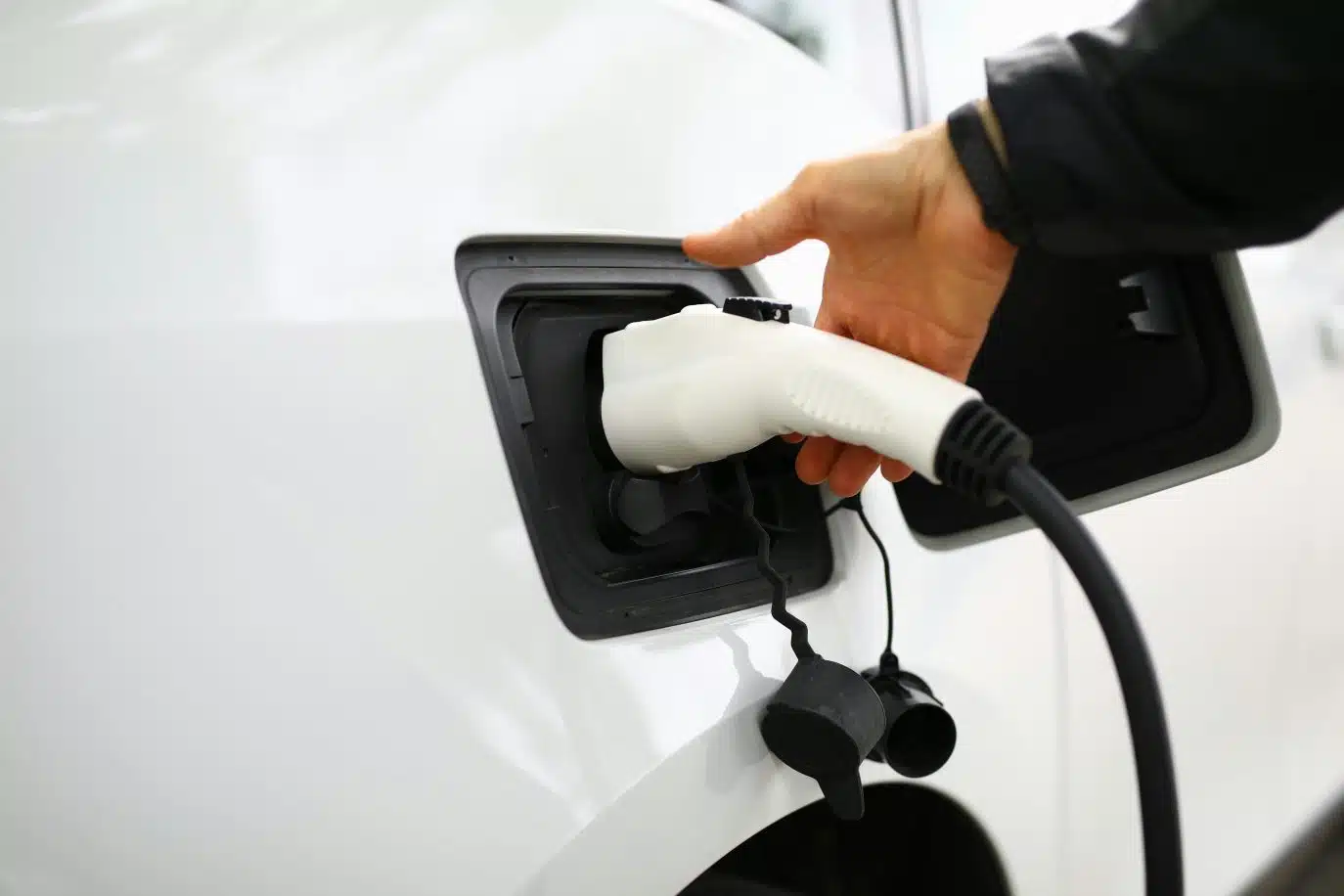Calculate Car Expenses For Tax: Every Deduction Counts, Especially For Business Owners
Getting tax deductions is always welcome, especially for small business owners. And there are many ways for you to avail them.
One of which is something that’s often overlooked, which is the vehicle expense.
For many, a vehicle is just a means of transportation. But for business owners, it’s a vital part of their operations. Yet, not a lot of them know that it is a tax-deductible item.
The Australian Taxation Office (ATO) allows individuals and businesses to claim tax deductions for vehicle expenses incurred for business purposes within the relevant financial year. Work related expenses, including car related expenses such as insurance, repairs, and fuel, are eligible for tax deductions when the vehicle is used for work purposes. A car expense refers to any cost incurred in the course of business use of your vehicle. To be deductible, the travel must be directly related to fulfilling your work duties, such as attending meetings or performing work-related tasks.
This article will shed light on that. We’ll also explore the three primary methods available for claiming vehicle expenses to lower your tax payment. This way, you can decide which one is best suited to your situation.
Introduction: Why Every Car Expense Counts at Tax Time
When tax time rolls around, every car expense you can claim makes a difference to your bottom line. For business owners and anyone using their own car for work related duties, understanding how to claim car expenses is essential for maximising your tax deduction. Whether you’re using the cents per kilometre method or the logbook method, knowing what you can claim and how to keep the right records can have a big impact on your tax return. From fuel and maintenance to work related trips and conferences, every eligible car expense adds up. In this article, we’ll break down the key methods for claiming car expenses, explain the eligibility criteria, and show you how to make every kilometre and every dollar count at tax time.
What Qualifies as a Vehicle Expense?
This isn’t simply just about your car.
vehicle expenses include a wide range of costs, like fuel and oil or repairs and maintenance. Vehicle insurance costs, registration fees, and vehicle depreciation are also classified as such. Also covered here are your lease payments and interest on motor vehicle loans.
If you need to carry bulky tools or equipment that cannot be left at the workplace, you may be able to claim vehicle expenses. This exception applies when you have to carry bulky tools that are essential for your work and cannot be stored at the worksite.
For these expenses to be considered tax-deductible, the vehicle involved should be used for business purposes. For instance, you use it for visiting clients, attending business meetings, and carrying equipment for business use. Travel between your normal workplace and an alternative workplace for work purposes may also be deductible. If your travel is partly private and partly for work, you can only claim the work-related portion of your car expenses.
Vehicles with a carrying capacity of one tonne or more, or those designed to carry nine or more passengers, are treated differently for tax purposes.
Eligibility to Claim Car Expenses
Before you start claiming car expenses, it’s important to make sure you’re eligible. To claim car expenses, you must own, lease, or hire the motor vehicle under a hire-purchase agreement. The vehicle must meet the ATO’s definition of a car: a motor vehicle designed to carry less than one tonne and fewer than nine passengers, including the driver. This includes most standard cars, as well as electric and hybrid vehicles that fit these criteria.
You can claim car expenses for work related trips, such as travelling between different work sites, attending work related conferences, or transporting equipment for your job. If your work requires you to carry bulky tools or equipment that can’t be left at your normal workplace, you may also be able to claim car expenses for those journeys—even if they start or end at home. However, you generally can’t claim car expenses for your regular commute between home and your normal workplace, unless you meet these limited circumstances involving bulky tools or equipment. By understanding these eligibility rules, you can ensure you’re only claiming car expenses for trips that genuinely relate to your work duties.
Special Considerations for Electric Cars
As electric vehicles (EVs) become more popular for business use, it’s important to understand how claiming car expenses works for all electric vehicles. If you use your electric vehicle for work-related purposes, you can include the electricity costs you incur as part of your work related car expenses. This means you can claim the cost of charging your EV at home, using the ATO’s EV home charging rate, which is designed to provide a reasonable estimate of your electricity costs without the need for detailed calculations. Keeping accurate records of your charging expenses and usage is essential for substantiating your claims.
If you charge your electric vehicle at commercial charging stations during work related trips, you can also claim these commercial charging station costs as part of your related car expenses. However, you’ll need to keep receipts from these commercial charging stations as evidence for your tax return. It’s important to note that if you use the EV home charging rate to claim electricity costs, you cannot claim commercial charging station costs separately for the same period.
The cents per kilometre method is available for electric vehicles, just as it is for petrol or hybrid vehicles. However, hybrid cars have different record-keeping and deduction requirements compared to electric vehicles and conventional cars, so it’s important to understand which rules apply to your vehicle type. This means you can use the cents per kilometre method to claim a set rate for each kilometre you drive for work related car purposes, making it a straightforward option for many business owners. By understanding these special considerations, you can ensure you’re claiming car expenses for your electric vehicle correctly and maximising your tax deduction.
Three Methods For Vehicle Expense Tax Deductions
There are three main methods for claiming a tax deduction for vehicle expenses: the cents per kilometre method, the logbook method, and the actual expenses method.
If you use more than one car for business purposes, you can choose a different method for each vehicle, as long as you keep the appropriate records for each. When using the cents per kilometre method, you must track your total business kilometres to ensure you do not exceed the annual limit. If you use someone else’s car for work, you cannot use the standard set rate; instead, you must keep receipts for actual expenses and determine your business use percentage to claim deductions. You may also be able to claim expenses when using someone else’s car for work, provided you meet the necessary record-keeping requirements.
Method #1: Actual Costs Method
This involves claiming actual expenses incurred with the use of your vehicle for business during the fiscal year. The Actual Costs Method (also known as the car logbook method) is comprehensive, allowing for a potentially higher tax deduction.
However, it is time-consuming and requires diligent record-keeping on your part. This includes collecting all receipts that are related to your vehicle expenses—from fuel, maintenance, and insurance, to any other related vehicular costs. You may need to claim a separate deduction for certain expenses, such as fuel, maintenance, and vehicle depreciation, so it is important to keep specific records for each category.
You must also create and maintain a logbook to jot down detailed accounts of all journeys made by that vehicle for business purposes. Using this logbook will establish the business percentage of vehicle use by tracking total and work-related trips, then dividing work trips by total trips to determine the percentage used for business purposes.
Then, at the end of the year, you will have to add up all your vehicle expenses. You then need to use the business percentage to calculate the deductible amount on your tax.
If your vehicle expenses are substantial, you can get higher tax deductions.
Method #2: Cents Per Kilometre Method
Unlike the Actual Costs Method, this is a straightforward way to claim vehicle expenses, also known as the ‘cents per km method’ or ‘km method.’ The Cent Per Kilometre Method doesn’t require detailed documentation. Instead, you claim a fixed rate for each business kilometre travelled by your vehicle for business purposes.
The Cent Per Kilometre method involves the following steps:
- First, you must keep track of and identify the number of business kilometres you’ve driven using your vehicle.
- Then, identify the cents per km rate set by the ATO. For 2023-2024, the set rate is 85 cents per km.
- To calculate your tax deduction, simply multiply the number of business kilometres you’ve identified by the cents per km rate set by ATO.
This method is relatively simple, not requiring you to keep a log and save your receipts.
However, the Cent Per Kilometre Method (cents per km method) is capped at 5,000 business kilometres per year. So, it may not be that beneficial for business owners who are heavily reliant on their vehicles for their operations.
Method #3: Logbook Method
This is another detailed way to claim vehicle expenses based on the actual business-use percentage. But unlike the Actual Costs Method, the tax deduction via the Logbook Method is determined over at least a 12-week representative period.
To be precise, you have to keep a continuous and detailed log of all your vehicle usage for a period of 12 weeks. You must keep a detailed record or diary of all work related journeys to support your tax deduction claims. And you need to identify when your vehicle was used for personal and business purposes.
Your logbook will be the main reference as to how your tax deductions will be calculated. You’ll also need it to know your business-use percentage.
To find out how much you can claim for vehicle expenses with the Logbook Method, use the same approach for the Actual Costs Method. Calculate your vehicle-related expenses over the prescribed 12-week period. Then, multiply that figure by your business-use percentage.
Since it is highly similar to the Actual Costs Method, it also leads to significant tax deductions if the vehicle was used immensely for the business.
Diminishing Value Method
When it comes to claiming depreciation on your work related car, the diminishing value method is a popular choice. This method allows you to claim a deduction for the decline in value of your car over time, reflecting how much the car’s value decreases as it ages and is used for business purposes. To use the diminishing value method, you’ll need to keep records of your car’s purchase price and any improvement costs, such as adding paint protection, new accessories, or tinted windows.
It’s important to remember that while you can claim depreciation as part of your work related car expenses, you cannot claim capital costs like the initial purchase price of the car or the principal on any money borrowed to buy it. Only the decline in value, calculated using the diminishing value method, and improvement costs directly related to your work related car can be included in your tax deduction. By keeping accurate records and understanding what qualifies, you can make the most of your related car expenses at tax time.
Calculating Your Business Use Percentage
To accurately claim your work related car expenses, you’ll need to determine your business use percentage. This is done by keeping a detailed logbook of your work related trips for at least 12 weeks. In your logbook, record the date, the start and end odometer readings, and the purpose of each trip—whether it’s visiting clients, attending work related conferences, or transporting equipment.
At the end of your logbook period, add up the total number of kilometres driven for business purposes and divide this by the total kilometres driven during the same period. For example, if you drove 10,000 kilometres in the income year and 8,000 of those were for work related use, your business use percentage would be 80%. You can then apply this percentage to your car expenses, including fuel and oil expenses, to calculate your tax deduction. This method ensures you’re only claiming the work related portion of your car expenses, keeping your tax return accurate and compliant.
Record-Keeping Essentials for Vehicle Deductions
Good record-keeping is the foundation of successfully claiming car expenses on your tax return. Whether you use the logbook method or another approach, you’ll need to keep detailed records of all your work related car expenses. This includes receipts for fuel and oil expenses, maintenance, registration, insurance, and any other expenses related to your work related car.
If you’re using the logbook method, make sure your logbook covers the same period for each car you’re claiming. Record your car’s odometer readings at the start and end of each logbook period, and keep all supporting documents for at least five years in case the ATO requests evidence. You can use either a paper or electronic logbook, whichever suits your workflow best. By staying organised and keeping thorough records, you’ll be well-prepared to claim every eligible deduction for your related car expenses.
Choosing the Right Method
Ultimately, selecting the right method to use to claim a tax deduction for vehicle expenses depends on how you use your vehicle for business purposes. And you also have to consider your record-keeping ability and personal preferences.
As mentioned, both the Actual Costs Method and the Logbook Method can offer higher tax deductions. This is especially true if you are relying heavily on your vehicle to keep your business running. However, it requires you to keep detailed records and receipts, making it more time-consuming.
In contrast, the Cent Per Kilometre Method provides simplicity and ease. The caveat is that there are limitations on the claimable amount. So, this is ideal for business owners who aren’t that reliant on their vehicles to ensure smooth business operations.
But if you’re unsure which method will allow you to get the highest tax deduction you possibly can, then consult a tax professional. They can determine which method best suits your specific circumstances and which one will get you the most savings on your taxes.
Maximise Your Tax Deduction For Vehicle Expenses
Admittedly, getting a tax deduction for the use of your vehicle for business is not as straightforward as it seems. You need to understand and apply the correct method for claiming vehicle expenses. At the same time, you must ensure compliance with tax laws.
Proper management of this particular deduction on your tax may seem inconsequential. But it can have a significant impact on the financial health of your business. As such, make it a crucial aspect of your tax planning.
But if you need more than this type of tax deduction to give your business a boost in funding, don’t worry. Unsecured Finances is here to help you. Apply online and you can receive your approval within 24 hours.
How Vehicle Deductions Impact Your Tax Refund
Claiming your work related car expenses can make a real difference to your tax refund. By including all eligible car expenses—whether you use the cents per kilometre method or the logbook method—you can reduce your taxable income and potentially increase your refund at tax time. For the 2025 tax year, the cents per kilometre method allows you to claim up to 5,000 kilometres at 88 cents per kilometre, making it a simple way to claim car expenses for those with moderate business use.
If your work related car is used more extensively for business, the logbook method lets you claim the business use percentage of your actual expenses, including fuel and oil expenses, running costs, and other running costs. The more accurate your records, the more you can claim, helping you maximise your tax deduction and keep more money in your business. By understanding your options and keeping detailed records, you can make the most of your vehicle deductions and see a positive impact on your tax return.
Conclusion: Making Every Deduction Work for Your Business
Maximising your tax deduction for car expenses isn’t just about saving money—it’s about making your business more efficient and financially resilient. By understanding the rules around claiming car expenses, choosing the right method for your situation, and keeping accurate records, you can ensure that every eligible car expense works in your favour. Whether you’re using the cents per kilometre method for simplicity or the logbook method for a more detailed claim, every deduction counts towards a healthier tax return. Take the time to review your work related car expenses, stay organised throughout the financial year, and don’t hesitate to seek professional advice if you want to make the most of your tax return. With the right approach, your car expenses can become a valuable asset for your business at tax time.




